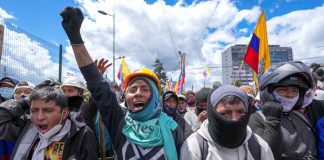More than a million people have taken to the streets around the globe as part of the Occupy movement. From Seoul to Santa Fe, in so many different languages, the protests expressed the anger felt by millions at the economic crisis and a political class that doesn’t represent their interests.
Along with a huge showing in Spain, 100,000 filled Times Square in New York on October 15 and thousands faced down tear gas and water cannons in Rome.
The call out for a global day of action originated from Spain’s “Indignados” movement, which was itself inspired by the Tunisian and Egyptian revolutions. On top of that, the inspirational scenes from Occupy Wall Street over the last month have struck a chord. Their rallying call, “We are the 99 per cent”, against the “1 per cent” elite that accumulates power and wealth by robbing and exploiting the rest of us, has been taken up globally.
It shows both a feeling of rage that there is something wrong with the capitalist system, but also a new hope that we can do something about it.
The movement is full of creativity and humour. A 150-strong orchestra fittingly played Beethoven’s Ode to Joy in Madrid. A popular placard in the US is “Lost my job—found an occupation”.
Very importantly, the movement has fed into the resistance of the working class to the economic crisis in many countries.
As socialist Jonathan Neale explains, the protests are putting the idea of class back on the map: “Now a generation is saying that the economy is the central reality, and the great majority of us are the class enemies of the ruling class. It cannot be put back in the bottle. And because protestors … are defining themselves in class terms, it is easy for unions to respond.”
The spirit of the movement shows the desire for a world not run by a handful of billionaires, but one that we run for ourselves.
Amy Thomas





